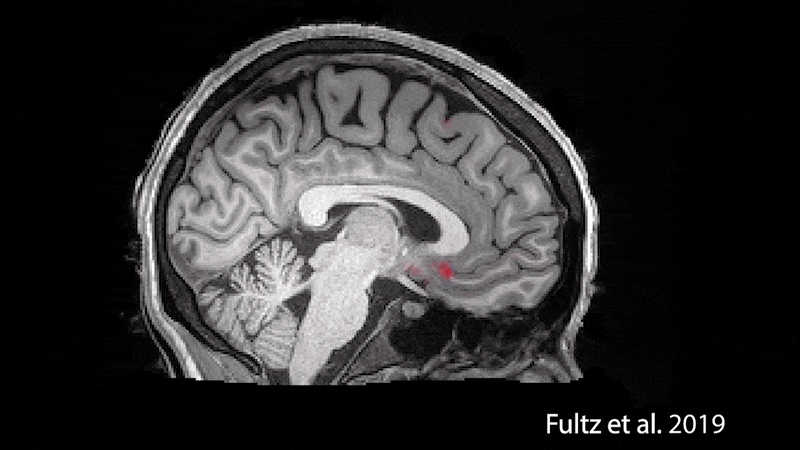A First Newsletter

Insert the obligatory “this year was a doozy” comment. I set up an email collector some time back and imagine my surprise when I checked the sign-ups this morning to find far more interest in a newsletter than I thought. Given all the change this year, I wanted to double down on keeping in contact with my network with some tips and curiosities from the world of brain science.
I promise to keep it brief, practical, and sufficiently strange to give you a couple of dopamine squirts and a smidgeon of awe for the complexity of the brain. Oh, and no marketing unless it’s something that’s been a true force multiplier in my life. If you’re not down, feel free to unsubscribe. No hard feelings.
That said, here’s a few musings from 2020:
- Coolest image. Ok, this one is actually from late 2019. But bear with me. When you sleep, three sets of rhythmic waves can be seen in the brain. It’s been known that distinct patterns of electrical activity take place in the brain while sleeping. A recent study revealed that this electrical activity is coupled with changes in blood flow (in red below) and cerebrospinal fluid (in blue). The reason? Unknown, but it likely has to do with memory consolidation and clearing cellular waste. So instead of counting sheep when you can’t sleep, just think about the coordinated waves of fluids lapping the cradle of your consciousness.

- Biggest breakthrough. My high school biology teacher used to say “you’re just a bag of chemical reactions.” I thought it was hyperbole…but it’s not. DNA is the blueprint for constructing proteins, which are the most abundant molecules in living systems. When new proteins are created, they fold into a 3 dimensional shape that determines what the protein does. The protein folding problem is a “grand challenge” of immense implications because it is incredibly hard to predict what shape a protein will take and therefore what it will do. In 2020 a Google team released AlphaFold, which is an artificial intelligence-based solution to solve this problem. Is it solved? Largely, but not fully since there are many edge cases and environmental factors. But this is a huge step forward in understanding the mechanism of DNA.
- On creative minds. Every so often your favorite minds team up on a project that makes you feel like you’re watching a neuroscience version of the A-Team or Avengers…or something (I don’t know, I actually haven’t watched those movies). Anyways, one dominant theory for expertise is the “neural efficiency” hypothesis where high performers undergo more efficient neurological processes when compared to their “non-eminent” peers. One 2020 study looked at this effect in eminent and non-eminent thinkers. It confirmed this hypothesis in the “default mode network,” which is also known as the mind-wandering or imagination network, where eminent thinkers show less activity. This network can be thought of as having two branches: one is rumination (think negative self talk) while the other is creative (think the ah-ha moment in the shower). Maybe that helps explain why creatives are also often dark souls. It’s another layer deeper into the mechanism of creativity.

- Book I’m most excited about. Ok, this one might be marketing-y but I swear it passes my filter as a force multiplier in my life. I read an advanced copy of Steven Kotler’s Art of Impossible and absolutely loved it. It’s a guide for motivation, learning, and creativity that is both theoretically rigorous and deeply practical. It’ll be released later this month but if you pre-order a copy now there is some added content for goal setting, managing distractions, etc. Seriously. Can’t recommend it highly enough. Preorder here.
- Goal setting strategies. I’ve long struggled with the best goal setting strategies. I’ve gone from spreadsheets tracking 100 or so daily habits to vague intentions set one New Years Eve and only recalled the following December 31st. My new favorite strategy is three-fold:
- Reflect. Take a single sheet of paper, divide it into 12 quadrants, and label each with a month from the past year. Use only bullet points of the most memorable parts (highlights and lowlights). Mark the really important ones.
- Name. Each year gets a theme based on how to double down on making the highlights from the past year a more central part of the following year. Name your year something succinct.
- Plan. Take another single sheet of paper. There are two sections. The first defines a mission, a goal, and the waypoints. The mission is a high level intention for your entire life such as “Advance society’s transition to a technological utopia.” The more idealist the better. The goal is a concrete application of that such as “Create a biotechnology company with $100M annual revenue that solves…” The waypoints are high level milestones in that process. The second section is four boxes with goals at different timepoints: lifetime, 10 year, 1 year, and 90 days (shout-out to Max Hug for this format). You only get a maximum of 5 goals in each box. Frame it. Keep it on your desk.
- Best change management song. Maybe change is the theme of every year but it was especially true of 2020. Best beats for embracing change? New Morning has been my go-to for the last 1.5 years.
And that’s a wrap! Hope this was fun and informative. I’ll try to do this more often, though probably a bit shorter. And please please please, let me know what you think.
Wishing you all the best in the new year,
Conor
PS. Feel free to share if you know of somebody else who might get a kick out of it.